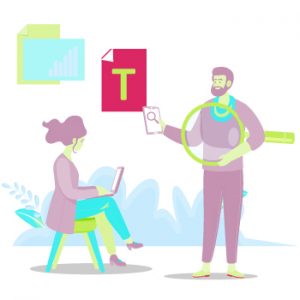
Certified Translation and Optimization
Certified Translation Optimization
Certified translation optimization involves refining the translation process to ensure high-quality, accurate, and efficient translations for official documents. This process is crucial for legal, medical, academic, and personal documents such as birth certificates, marriage certificates, and legal contracts, which often require certified translations for use in legal proceedings or submission to government agencies. Optimization includes employing experienced and skilled translators who specialize in the specific type of document being translated, implementing advanced translation technologies, and following rigorous quality assurance procedures. These measures guarantee that translations are not only accurate and complete but also meet the regulatory standards of the target country. By optimizing the translation process, translation service providers can offer reliable and timely certified translations, facilitating seamless communication and compliance across different languages and jurisdictions.
If you’re thinking about using a CTO, you may be wondering what the pros and cons are. There are a few. First, you’ll save time. A CTO will usually get the job done faster than a professional human translator. Secondly, you’ll avoid costly mistakes that come with manual translation. Third, a CTO’s job is to provide you with a document that’s accurate and up-to-date.


Pros and Cons of Certified Translation Optimization
Certified translation optimization offers several advantages but also comes with some challenges. On the positive side, optimization ensures high-quality and accurate translations, which are essential for legal, medical, and official documents. This accuracy is crucial for compliance with regulatory standards and for the credibility of the translated documents. Optimization often involves using advanced technologies and skilled translators, which can significantly improve the efficiency and turnaround time of translation projects. Additionally, a well-optimized process can reduce costs in the long run by minimizing errors and the need for revisions.
However, there are some cons to consider. The initial setup and implementation of an optimized translation process can be time-consuming and expensive, requiring investment in technology and training for translators. Additionally, while technology can enhance efficiency, it may also lead to over-reliance on automated tools, which might not always capture the nuances and context of human language. Finding a balance between human expertise and technological assistance is crucial to maintain the quality of translations. Despite these challenges, the benefits of certified translation optimization often outweigh the drawbacks, providing reliable and efficient translation services essential for global communication.
Cost of Certified Translation Optimization
The cost of certified translation optimization can vary significantly depending on several factors. Initially, investing in advanced translation technologies, such as translation memory systems and automated quality assurance tools, can be substantial. Hiring experienced and skilled translators who specialize in certified translations also adds to the cost, as their expertise ensures accuracy and compliance with legal and regulatory standards. Additionally, the complexity and length of the documents being translated can affect the overall cost, with legal, medical, and technical documents often requiring more time and expertise.
However, these costs can be seen as a valuable investment. By optimizing the translation process, companies can reduce the likelihood of errors and the need for costly revisions. Efficient workflows and the use of technology can streamline the translation process, leading to faster turnaround times and potentially lower costs in the long run. Furthermore, high-quality translations can enhance a company’s reputation and reliability, particularly when dealing with international clients and regulatory bodies. Thus, while the upfront costs of certified translation optimization may be high, the long-term benefits and potential savings make it a worthwhile investment for businesses and organizations that require precise and reliable translations.
You also want to read this guide to know better about the pros and cons of online translation jobs.
Human vs Machine Translator
In the translation industry, choosing between human translators and machine translation services can significantly impact the quality of your project. Human translators, skilled in handling various language pairs, rely on their expertise to ensure that translations match previous and adapt to future translations with precision. They utilize Computer-Assisted Translation (CAT) tools to create perfect matches and address fuzzy matches, which helps maintain consistency, especially in technical manuals and user manuals.
On the other hand, Neural Machine Translation (NMT) and machine translation systems leverage advanced machine translation technology to provide rapid translations. While these systems are efficient, they may not always capture the nuances of human translations. Freelance translators and project managers often use translation software and CAT tools to integrate machine translations with human oversight, optimizing the localization process and enhancing user experience. By combining the strengths of both human and machine translation, you can achieve a more accurate and reliable translation outcome. The translation industry offers diverse translation jobs, ranging from human translation services to roles focused on technical documentation. As Machine Translation (MT) technology evolves, it complements human expertise to enhance accuracy and efficiency in translating complex documents.


Neural Networks
Google has changed how it works. For specific languages, it uses neural networks. This artificial intelligence is a replica of our brain’s nervous system. The neural network is trained using a large amount of online data, including a wide range of contextual and linguistic information. Both use neural networks, but Google Translate uses what is known as recurrent neural nets. DeepL, on the other hand, uses convolutional neural networks (CNNs), which provide better results for longer, continuous words.
Target Language
Click on “Translate document” to open the option to modify the target language. Choose the single language you wish to target. You can use the finder to specify whether you are searching for a native translator in either the source or target language. Also, you can indicate your area of expertise.
Automatic Translations
Automatic Translations and manual translations by Weglot We know that automatic translators will never be 100% accurate. Mark as Reviewed – If you are satisfied with the translation, click the tick to change it from an automatic translation to a manually edited translation. Visual Editor Automatic translation is a time-saver over manually translating the text or hiring a professional translator. Automated translations are supported, which can save you time and effort.
Translation Memories
Translation memories and glossaries Translators don’t have to translate the exact phrase twice, thanks to translation memories. Translation memories are databases that store the source text and its translation. Translation Tool – Translators will have access to any phrase stored in the translation memory of the CAT Translation tool whenever they need it.

Comprehensive Document Translation Services
Translation agencies provide professional translation services for a wide variety of documents, including birth certificates, marriage certificates, medical records, and legal documents. These agencies employ expert translators to ensure accurate translations of official documents, which are crucial for legal matters and proceedings in foreign countries. The translation process begins with the original document and includes meticulous quality checks to deliver high-quality translations.
Whether dealing with business documents, marketing materials, or academic documents, translation companies offer services across numerous language combinations, breaking down language barriers. They cater to various language pairs, ensuring that the source languages are accurately translated into the target languages. Technical document translation services benefit from Translation Web Services as a translation quality driver, utilizing online translation memory to enhance the accuracy of machine translation software output.
Document translation services also cover death certificates and personal documents, providing complete translations for any type of translation project. The cost of translation varies depending on the type of document and the complexity of the translation process. A skilled translation team, including experienced translators, guarantees a seamless and efficient service, making them reliable language service providers for any official translation needs.
Legal and Educational Document Translation
A reputable translation company provides certified translation services for various types of documents, including legal translations, school transcripts, and financial statements. These companies employ qualified translators, including ATA-certified translators, to ensure that translations meet high-quality standards. Utilizing machine translation and localization services helps tailor the content to the target audience while maintaining the integrity of the original document. Common documents requiring translation often include certificates of translation for immigration purposes. By focusing on relevant keywords, such services also improve search engine rankings. Educational institutions rely on these translations to maintain accuracy and compliance, ensuring that translation quality remains high despite translation costs.
Translations with Technology and Expertise
Consistent translations are crucial for maintaining quality across various localization projects. Machine translation tools and computer-assisted translation (CAT) software, including Translation Memory (TM) and terminology database systems, play a valuable role in this process. They ensure that exact matches and consistent terminology are preserved across large volumes of content, such as technical documentation and clinical trials.
By leveraging these tools, localization experts can address idiomatic expressions and cultural context, making sure translations align with both the original language and the native language. The pre-translation phase benefits from TM software by integrating previous translations and cultural sensitivity, enhancing match rate and accuracy. Translation memory tools are essential for achieving consistent translations, as they help manage the source file and maintain consistency in terminology and cultural context throughout the project.
Enhancing Translation Quality with Advanced Tools
Translation Memory software is a valuable tool for managing translation quality for technical documentation and medical records. This technology helps maintain consistency by tracking identical matches and translation units across entire documents. By leveraging TM, translation programs ensure accurate translations of sensitive documents, like medical records, by referencing identical segments and maintaining the current context.
Effective use of TM software reduces translation memory pollution, a common issue that can lead to incorrect translations. This process involves carefully managing source text segments and ensuring that official languages are correctly translated into the target file. For creative texts and other complex materials, natural language processing technologies can improve translation accuracy. Services like Translation Hub offer efficiencies for translation units, enhancing overall translation quality.
Ensuring Excellence in Translation Management
Effective translation management relies on maintaining high quality and consistency throughout the translation workflow. This involves using reference materials and implementing a robust quality assurance process to address potential issues and ensure correct translation. The assurance in translation starts with pre-translation steps and involves regulatory requirements that must be met. Inconsistent translation can undermine the credibility of the final product, which is why linguistic quality assurance and adherence to quality requirements are crucial.
Localization teams play a key role in this process, working as language partners to handle localization programs and beta testers to refine the translation. Common practices in translation management include establishing clear quality benchmarks and addressing potential issues proactively.
Furthermore, incorporating a notary public for official documents and ensuring that all translations meet the required standards solidifies the commitment to delivering high-quality and reliable translation services.
Frequently Asked Questions
What is a certified translation?
A certified translation includes a statement from the translator or agency affirming that the translation is accurate and complete. It’s often required for official documents.
Why is certification important for translations?
Certification ensures that translations are legally valid and meet the specific requirements of agencies or institutions, such as USCIS or courts.
How does optimization affect certified translations?
Optimization involves improving the translation process for efficiency and accuracy, ensuring that certified translations meet quality standards and deadlines.
Can optimization compromise translation quality?
No, optimization aims to enhance efficiency while maintaining high quality. Certified translations are still accurate and reliable despite optimized processes.
What role does technology play in certified translation?
Technology, such as Translation Memory and CAT tools, helps streamline the translation process, making certified translations more consistent and efficient.
